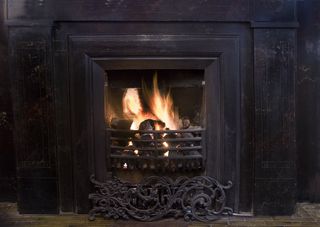
by blogediter | Sep 3, 2018 | Gas Logs
Gas Fireplace Troubleshooting
What is a Gas Fireplace?
A gas fireplace emulates a real fireplace while burning either propane or natural gas instead of wood. There are two types of gas fireplaces. Some are vented and some are ventless. Vented gas fireplaces are very realistic looking; however, there is as much as 90% heat loss since much of it goes up your chimney. The ventless type is designed to operate without a chimney and is very efficient; however, it isn’t quite as realistic looking as the vented type. So if you just want the look without worrying about wood or heat a vented model will do, but if you want to supplement your current heating system with an appliance which will not require electricity to work once lit and can be manually lit if necessary then the ventless model is the better choice.
Common Problems with Gas Fireplaces
Pilot Light Won’t Light: There are a bunch of issues that might keep the pilot from lighting. First, check to see if the fuel valve supply to the appliance is in the open position. If it isn’t then open it and try to light the pilot. Next, check to see if the emergency shutoff valve is “on” and if it doesn’t turn it on and try to light the pilot. If you use propane check to see if your propane tank is empty, ensure the appliance setting is in the pilot. If it isn’t, then set it to pilot and try to light the pilot. Check your instruction manual to ensure you are holding the match in the right place. Hold the reset button down when lighting and ensure you are holding it down long enough to activate the electromagnet in the safety shutoff system, which is 30-60 seconds. If you still can’t light the pilot, call a professional.
Pilot Light Lit but Gas Jet Won’t Light: Sometimes this happens because the control is not on the “On” setting, or because the thermostat is not set for heat. The solution is to check to see if the valve and remote control are on and check the thermostat to ensure its set to the on position. Also, check that the temperature is set to a degree that is above the current temperature in the room. If neither of these solutions fixes the problem it may be caused by a blockage in the orifice or burner. A service call is needed to have a professional fix the problem.
Soot in your room: This is somewhat common on vented gas fireplaces and may indicate an inadequate vent or chimney. The solution is to ensure the damper is open enough. If it is then you should clean the vent or chimney. If you get soot in your room with a ventless gas fireplace it is installed improperly. The solution is to have a professional fix the problem.
Prevention of Gas Fireplace Problems
Has your gas fireplace installation done by a Chimney Sweep professional and have the appliance serviced regularly? If vented, clean your vent or chimney periodically.
This troubleshooting article was submitted with permission by Highs Chimney Sweep
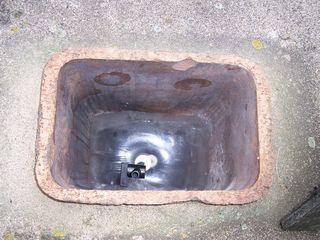
by blogediter | Aug 31, 2018 | Gas Logs
Plug My Vent Free Gas Log Chimney
Q: Jason, I have a set of non-vented gas logs which when not in use lets a horrible downflow of cold air in from outside. I saw an old thread that said the Chimney Balloon will deflate when installing near the damper if it is exposed to heat.
My question is can I close off the top of the chimney chase up on the roof with one of the Chimney Balloons? And would the temperature at that height be cool enough where we could fire the gas logs and still keep the Chimney Balloon intact? Thanks, DV
A: Hi DV, You pose a very good question. We have had many customers install a Chimney Balloon upside down from the top of the chimney when they have installed an electric fireplace insert, or if they have decommissioned their fireplace completely, but I have strong reservations about trying it with a vent free gas log.
My initial reaction is with the vent free gas log burning I am certain that the temperature at the top of the chimney will get to the 200 degrees Fahrenheit and trigger the Chimney Balloon to melt, shrink, and release. The reason for my certainty is that the damper you have is inevitably going to leak heat or convect heat into the chimney and that heat will naturally rise and collect against the Chimney Balloon.
My suggestion is to use the Chimney Balloon conventionally and just install it while the fireplace is not being used. Any amount of time you have the Chimney Balloon installed will be saving you money.
There is one other thing you should be aware of with your vent free gas log. There was a University of IL 3 year study that was done on ventless gas units in homes in Illinois. Here is a link to a blog article about the study and a link to the study results: http://www.chimneyballoonusa.com/blog/2009/08/3-year-univ-of-il-study-results-answer-how-safe-are-ventless-gas-logs.html
Personally, I found this research to be eye-opening and something that ventless gas log users should be aware of. I will let you draw your own conclusion from it, but pay particular attention to the NO2 level results in the study.- Jason
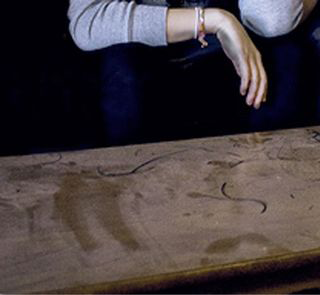
by blogediter | Aug 29, 2018 | Chimney Problems
Dust and Ash
Q: Jason, I rent a very old house – built 1927 and I have 5 unused chimneys. Besides helping with the drafts and the odors – will the Chimney Balloon also stop some of the dust that is coming in through the old chimneys? – EL
A: Hi EL, Yes, The Chimney Balloon will offer a tight seal that will stop the dust and soot from falling down your chimney and circulating about the house in two ways.
1) The Chimney Balloon will close off the fireplace low and tight to eliminate the air movement that transports the dust.
2) The Chimney Balloon will also seal off the dust that is up in the chimney so it cannot fall down to the firebox area. Some people also use the Chimney Balloon to prevent Asian beetles, bats, wasps, spiders, and other little critters from entering their home through the chimney flue.
I hope this answers your question thoroughly. – Jason
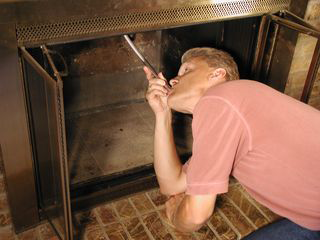
by blogediter | Aug 29, 2018 | Save Energy
Overinflate a Chimney Balloon
Q: Is it possible to over-inflate the Chimney Balloon? How do you know when you have blown in a sufficient amount of air?- DC
A: Hi DC, The Chimney Balloon should be a little springy (not drum tight) when inflated. If it is inflated enough to seal and hold in place, then it is inflated enough.
I know the temptation is to blow it as tight as possible, but that is not necessary. If you use an airbed inflation pump to inflate the Chimney Balloon sometimes it helps to remove the pump just before the balloon is fully inflated and top the inflation off by blowing into the inflation tube. That will give you a feel for how much pressure is in the balloon.
I never recommend using an air compressor to inflate a Chimney Balloon. They build pressure in the balloon too quickly at the end of the inflation, and it can easily blow out the Chimney Balloon or the seals on the Chimney Balloon before you have time to stop it. – Jason
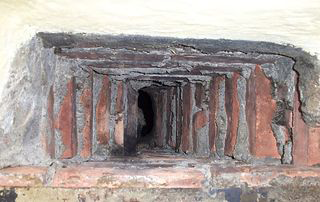
by blogediter | Aug 24, 2018 | Gas Logs
Bath Yellow Fireplace
Q: Jason, My wife and I recently bought a fixer-upper and are almost ready to move in. We knew that we had to do some work to our brick wood burning fireplace, and have been really swaying toward putting in a gas direct vent insert. When I looked up into the flu I was surprised to see that we don’t have a damper AT ALL. The previous owners had removed it leaving us with a 1′ x 2′ opening going up into our flu. My question is, will the Chimney Balloon work for me if I want to convert my existing fireplace into a directly vented gas log? -JD
A: Dear JD, Considering the outside temperature isn’t getting any warmer at this time of year, I would suggest you get a Chimney Balloon in this fireplace very soon so you won’t be loosing your interior heat up the flue.
It could be that the previous owner had a vented gas log in this fireplace when he lived there (he must have taken it with him) and that is why the damper was removed. Building code states that a vented gas log fireplace must have the metal damper removed or clipped open regardless if the fireplace is in use or not.
The reason for this code is to keep people with vented gas logs from accidentally asphyxiating the occupants of the home by burning the gas log with the damper closed. The side effect of this building code is wholesale heat and A/C loss 24/7 through the flue.
Many vented gas log owners opt to use a Chimney Balloon in the flue to stop the heat and A/C loss. If they accidentally light the gas log before manually removing the Chimney Balloon it is designed to shrink and burst and still allow the fireplace gasses to escape. This saves the occupants of the home but sacrifices the Chimney Balloon.
When you install a direct vent fireplace insert I suggest you have it vented through the wall and have the flue plugged with a Chimney Balloon. Even if you decide to wait on upgrading the fireplace get that balloon in right away. If you decide to vent the new direct vent gas fireplace up the chimney, you will still have to work out some way to plug the rest of the flue around the vent pipes. – Jason




